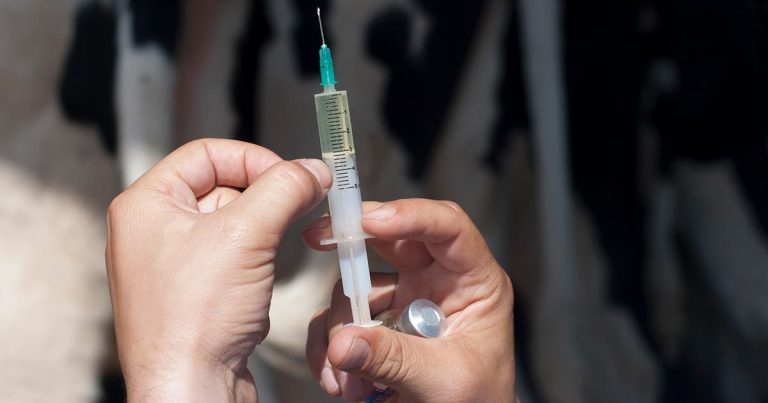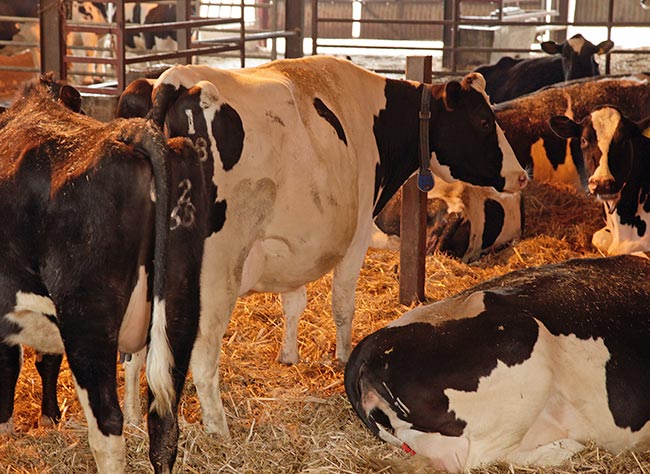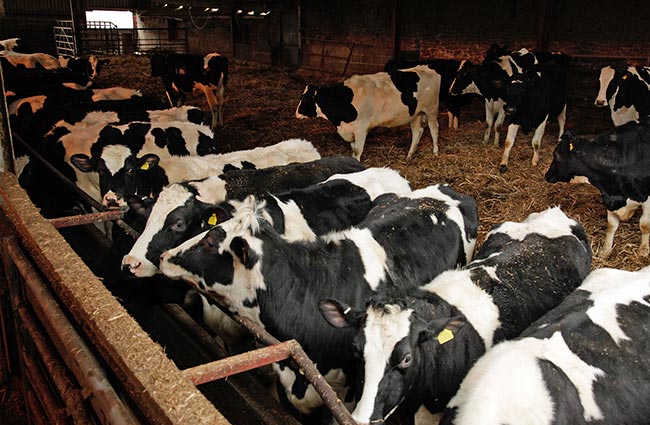11 Feb 2019
Sally Wilson discusses the importance of clear, concise communication between these two parties on this subject.

Image © ellisia / Adobe Stock
Having an appreciation and understanding of our clients’ priorities in their business will help us communicate the important facts relevant to them when it comes to vaccinating their animals.
Therefore, in the age of increasing antimicrobial resistance (AMR) and efforts to reduce use of antibiotics, vaccination could play a more important and relevant role than ever on UK farms.
With 95% of farmers seeing their vets as their only reliable source of information on vaccination, this is a perfect opportunity to share knowledge and help our clients make informed decisions on which vaccines to use, and how to make the most of them from both an economic and welfare perspective.
In this article, the author draws on her experience of her vet-client relationships to discuss how to get the best vaccination compliance and, therefore, the most benefit from vaccination.
As a large animal vet going on to farms, it is difficult to appreciate the fact that, when you turn up to carry out your routine fertility visit or TB test, you are a very small part of a much bigger picture in farmers’ thoughts.
They are probably also thinking about the fact they are a man down in the parlour, they need to buy their “cow cake” before the end of the day otherwise the price may go up or they have booked the contractor for this afternoon to do their first cut, but it is looking like rain after all.
It is very difficult to work out how much farmers have on their mind when you get a positive bulk tank for bovine viral diarrhoea (BVD), suggesting a persistently infected (PI) animal may be present in the herd and, therefore, how much audience you will get to convince them this is an important matter and it could have terrible implications for the fertility of their herd.
When the magic word “vaccine” is mentioned by the vet, everything seems to be okay again because, in many cases, farmers will think vaccinating will eradicate a disease or problem.
In fact, this isn’t always the case. But how much information do we need to try to convey to the farmer to get full compliance and how likely is it the farmer will fully appreciate the importance of handling, temperature, dose, primary courses and injection route?
A total of 95% of farmers see their vet as the most important source of information with regards to vaccination (Cresswell et al, 2014). This means, unlike many other areas of our work, we are their first choice to gain advice regarding vaccination. This is a great opportunity for practising vets to contribute to improving both the welfare and the economic situation on a farm.

In the face of an outbreak, persuading farmers vaccination is a good idea isn’t difficult. This is because they can physically see the devastating results the disease is having on their herd. A naive farm attacked with infectious bovine rhinotracheitis (IBR) is not a pretty sight – many cows are ill; some heifers will die and the loss of milk, fertility and life can be quite distressing in the extreme cases.
We know vaccinations are best used as insurance policies – prevention is better than cure – but start by asking your clients what they aim to achieve through their vaccination strategy. They may have wildly unrealistic expectations of a vaccine that you may be required to manage.
Being able to calculate how much cover to take out with this insurance policy and to balance it with the cost of the premium is a difficult one, and this is where the vet comes in. It is important farmers understand where their biggest risks lie and, therefore, where their biggest wins are likely to be. Communicating this to farmers is critical in getting them on board with the proposed vaccination plan – ideally before they suffer the losses associated with an outbreak.
The use of antibiotics is now being avoided wherever necessary without causing welfare issues; vaccinations are, therefore, becoming more pertinent. The term “prevention is better than cure” has never become more relevant than now when antibiotic resistance is becoming a looming, global problem.
Many farms have improved their management styles, husbandry skills and clinical knowledge enough to reduce their antibiotic use significantly. Here, vaccines are a major tool in our armoury to help fight many infectious diseases. However, it is important the farmer understands this is only one of a plethora of tools, and disease control must be fought from many angles.
As vets, we are always looking from the animal health perspective. Although farmers also do this, they also have the economic side to weigh up when it comes to what to vaccinate against.
We know if we find a BVD PI calf on a tag and test, the most risk this animal poses isn’t really to its pen mates, but more to any pregnant cattle with it comes into contact with. We cannot, and should not, assume farmers will know this – they rely on us for this information.
It is dangerous to assume, just because you have told him or her a fact once, a farmer will absorb and store this information in case he or she comes across the situation again. This is because farmers are looking at their business from a slightly different perspective. They are unlikely to have the background physiological and pharmacological knowledge we learned at veterinary school, so don’t be afraid to repeat yourself to make sure they have grasped the most important points.
A definite difference in perspective exists when it comes to cost of a vaccine. In a survey carried out in 2013, vets were found to perceive cost to be the greatest barrier to vaccination (92%), but this was different from the proportion of farmers perceiving cost to be a barrier (6%; Richens et al, 2014). In the author’s experience, cost is the least likely issue.
It is the vet’s role to minimise the relevance of the cost when it comes to advising farmers on whether they ought to be considering the use of a vaccine. If you are recommending the correct vaccine, the benefits gained will far outweigh the cost; it seems the farmers recognise this and vets need to believe in the courage of their convictions.
To get the most out of their vaccines, farmers ought to have some basic understanding of the following:
The ins and outs of immunity are never-ending, but we need to pick out the relevant parts to explain to our client.
The reasons why vaccines appear not to work properly are rarely that the vaccine has been manufactured incorrectly. However, this is often the first thing farmers will consider if they get an apparent failure. We need to make sure they know the basic facts surrounding apparent non-efficacy.
Most failures of vaccination regimes in cattle are shown in Panel 1.
Even the most compliant of farmers become frustrated at the number of times the vaccine should be given; if animals are on a few different vaccines, they may need to be handled a few times over a short period, which may seem unnecessary to farmers as they have limited understanding of how the immune system works. This can lead to resistance from farmers – sometimes venting their frustration at why you seem to want to make their life so difficult, therefore showing lack of appreciation for everything else they must do in a day.
“We have to be practical” is one of my farmer’s most commonly used terms. What he actually means is: “What can we get away with without ruining the effectiveness of this vaccine?”
To avoid resistance from our clients, it is important to show appreciation of what happens on a day-to-day level on this farm and avoid churning out standard vaccination protocols that have little hope of getting anywhere near the dairy office. Instead, time could be spent at the end of a routine visit to talk about the practicalities so you can formulate a plan together. Then you can go away, devise a flow chart or simple spreadsheet and send a laminated copy, which can go up on the dairy wall. When the farmer receives it, it will look familiar as many of the actions will be actions they have suggested.

There are some points at which our farmers need to know they can’t push the boundaries. If they are going to pay this money for this vaccine, then they need to get the best out of it. Leaving a half-opened bottle of vaccine on the dashboard of the Land Rover and then using it two weeks later is definitely not going to be value for money.
It may suit your clients to have a paraprofessional on farm to administer the vaccines. This way they can rest assured it is done correctly and effectively. Other clients may prefer to do it themselves to save on cost. This is the time when having some understanding of the principles behind vaccination may help them stick to their protocol.
The biggest risk of introducing disease to a herd is through the introduction of new stock carrying the disease. The likelihood of an individual animal or a herd suffering a disease outbreak is a balance between the level of exposure and the immunity of the animal. The more often new animals are introduced into a herd, the higher the risk of disease, the harder it is to maintain watertight vaccination protocols, the higher the infection pressure is likely to become and the less likely it is that vaccination alone will completely prevent disease from occurring.
Although most vaccines are POM-V, remember some vaccines may be obtained without a prescription. It can be frustrating when your client seeks advice on these vaccines and then buys them from the agricultural merchants down the road. But it confirms the vet is the first go-to person when it comes to vaccination advice. And it will stand you in good stead for the future; after all, we all want the same thing – as healthy a herd as possible.
The economic impact of almost every disease in cattle is such that disease prevention is far preferable to treatment.
Groups of disease for which a cattle vaccine or vaccines are available in the UK are listed in Panel 2.